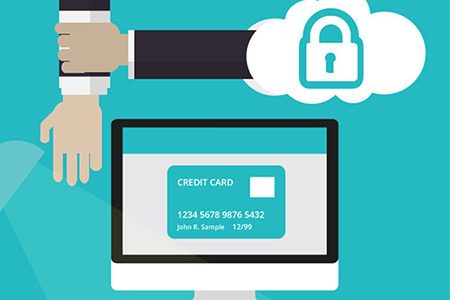12 Steps to protect your data online
Keeping your identity, and your data safe online is becoming a lot harder to keep track of. Where you should start and what’s important to do and not do can be difficult to decide.
So we decided to compile h2o digital’s list for internet security. Which should keep you and your information safe and secure.
- Backups – Backing up your data on an external hard drive or to the cloud will ensure data won’t be lost if you’re unfortunate to suffer a hardware failure or loss.
- Anti-Malware – This protects your system from all the viruses that flood into your computer without you even realising. If you have anti-malware software installed, you won’t have to worry about your system and data being affected. There are plenty of FREE Anti-Malware programmes out there.
- Installing Operating System updates – As annoying as these can be, it’s better to be safe than sorry! Operating system updates are there because they have detected recent threats that could put you and your system in danger. Therefore you’re at risk if you don’t update them. Try scheduling them for when you’re going to bed. Or if it’s your work computer set it to update during your lunch break. So when you are back at your desk, all updates and ready to use.
- Storing Passwords – You wouldn’t leave your keys in your front door now, would you? Then why would you leave all your important passwords written down in one place? Once attackers have access to this, they have access to EVERYTHING. Stop them short by getting a password management tool. There are a lot of them online you can use which store all your usernames and passwords under one roof. So you can create strong passwords without the fear of forgetting them. PHEW!
- Overwriting Deleted Files – Deleted data can sometimes linger around on your computer. This can still be recovered by an attacker. To avoid this overwrite your data. In some cases, this will keep your files organised and easy to access in the future.
- File Encryption – If you have files and folders that contain sensitive information, use a file encryption. There are quite a few apps out there you can use to keep your data super safe. But there is an easier method you can utilise on your computer, all you need to do is password protect your important files – SIMPLE.
- Deleting Data From Your Phone – REMEMBER! If you’re deleting ‘stuff’ from your phone remember that files are often still on the cloud. To permanently delete files, delete them from the cloud as well.
- Bluetooth – Attackers exploit Bluetooth connections when attempting to hack. However, they can’t hack you if you aren’t connected to Bluetooth. Disable Bluetooth when you’re not using it. Bluetooth also drains your battery life at a fast rate, so a practical tip as well as a safety tip for you there!
- Transaction E-Mails – Setup email alerts with your bank. These will send you an email whenever you use your credit or debit card. You’ll be the first one to know if fraudsters have been using your card details. So you can get in touch with your bank to block the card from making any further purchases.
- Signing Out – Most websites nowadays will keep your account signed in even after clicking off the site. Make sure you sign out of your account before clicking off the tab, especially on public computers. The next person to use the computer will have access to all your personal information. Making it the easiest hack of them all. Unless your passwords are ‘password’ of course! On that topic, here’s a list of the 50 most common passwords exposed to hackers.
‘password’ coming in at 4th place. - Screen Savers – These are an easy-peasy way to prevent people from snooping at your data. If you get distracted and leave your computer unattended. Having a screen saver pop up after 5min will keep your information safe from prying eyes.
- 2-Factor Authentication – Sometimes a password just isn’t enough. Adding in a security question only you would know will help prevent the attackers gaining access to your data. Most sites provide you with a default question such as your mother’s maiden name. Some sites let you create your own questions. Just say to yourself “Am I going to remember this answers in 6 months time?” Speaking from experience…it’s easy to forget these things! Another good 2-factor authentication to do it hook up your phone to your account – you’ll then be sent a one-time passcode to access your account.
From Scammer to Saint
Follow these simple steps if you want to avoid any risk of your data being breached by hackers. Attackers poise their threat by targeting people’s data with intent to harm. The way they do this is to target people for ransom, data theft or even phishing.
Phishing is a form of attack that can appear to be trustworthy. However, it’s intention is to obtain your personal details. The prime example was the Nigerian Prince needed direct help from you all those years ago! However, here is the story of one person who took the phishing scam to a whole new level – From scammer to Saint.
So there’s your actions on how to keep yourself safe online when browsing the web. If you’re a business and would like to know more about how to keep your website secure online drop us a call on 0115 772 2073 or send an email to hello@h2o-digital.com
Stay safe everyone!








